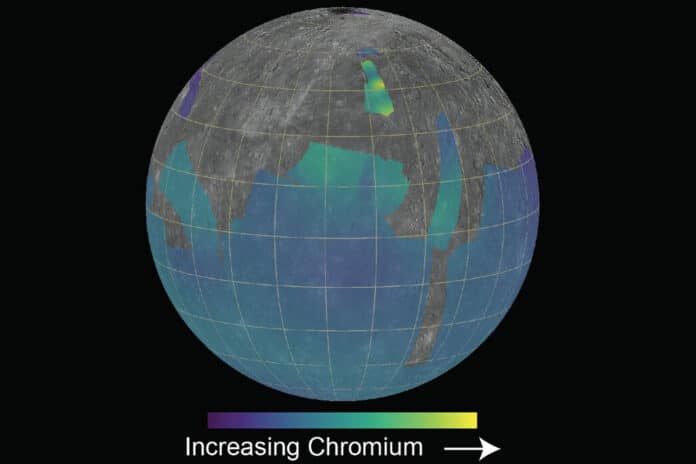Mercury, the innermost planet, formed under highly reduced conditions, based mainly on surface Fe, S, and Si abundances determined from MESSENGER mission data. The minor element Cr may serve as an independent oxybarometer, but only minimal Cr data have been previously reported for Mercury.
In a recent study, Arizona State University scientist Larry Nittler used data acquired during the MESSENGER mission to measure and map the abundance of the minor element chromium across Mercury’s surface.
According to research by Nittler and colleagues, the amount of chromium varies over Mercury by a factor of around four. They created theoretical models to determine how much chromium should be present at Mercury’s surface, given various scenarios for the planet’s division into a crust, mantle, and core. The scientists established that Mercury must include chromium in its substantial metallic core and was able to set new limitations on the planet’s total oxidation state by contrasting these models with the measured chromium abundance.
Nittler said, “This is the first time chromium has been directly detected and mapped across any planetary surface. Depending on the amount of available oxygen, it likes to be in oxide, sulfide, or metal minerals, and by combining the data with state-of-the-art modeling, we can glean unique insights into the origin and geological history of Mercury.”
Co-author Asmaa Boujibar of Western Washington University, who performed the modeling described in the paper, added: “Our model, based on laboratory experiments, confirms that most chromium in Mercury is concentrated within its core. Due to the unique composition and formation conditions of Mercury, we cannot directly compare its surface composition with data obtained from terrestrial rocks. Therefore, it is essential to conduct experiments that simulate the specific oxygen-deficient environment in which the planet was formed, distinct from Earth or Mars.”
In the research, Nittler, Boujibar, and their co-authors gathered information from lab tests and examined how chromium behaved under various oxygen abundances in the system. They subsequently created a model to look at how much chromium was present in each layer of Mercury.
The results show that much chromium, like iron, is sequestered within the core. The scientists also noted that more chromium is hidden within the planet’s interior when oxygen levels decrease. This information greatly improves our grasp of Mercury’s elemental makeup and the geological processes at work.
Journal Reference:
- Larry Nittler, Asmaa Boujibar, et al. Chromium on Mercury: New Results From the MESSENGER X-Ray Spectrometer and Implications for the Innermost Planet’s Geochemical Evolution. JGR Planets. DOI: 10.1029/2022JE007691
